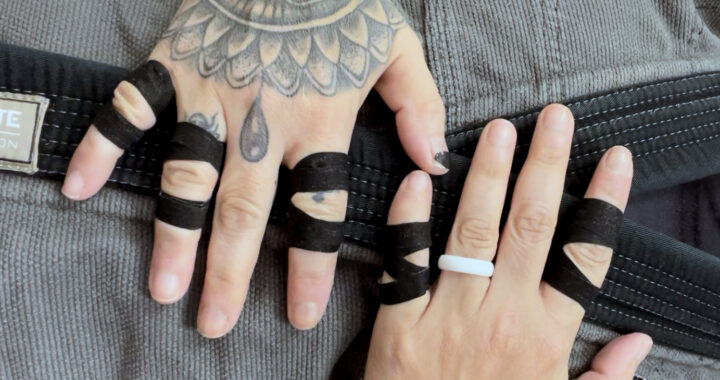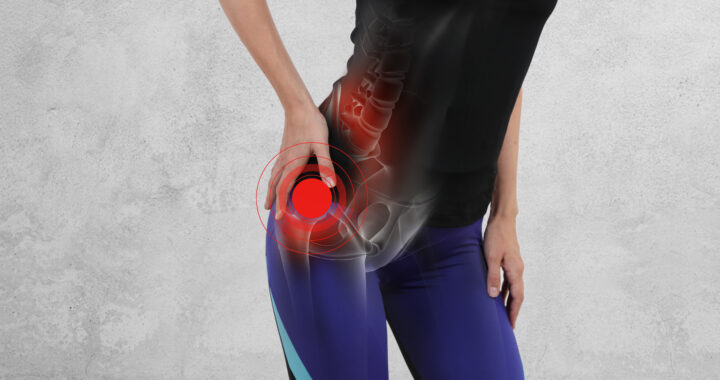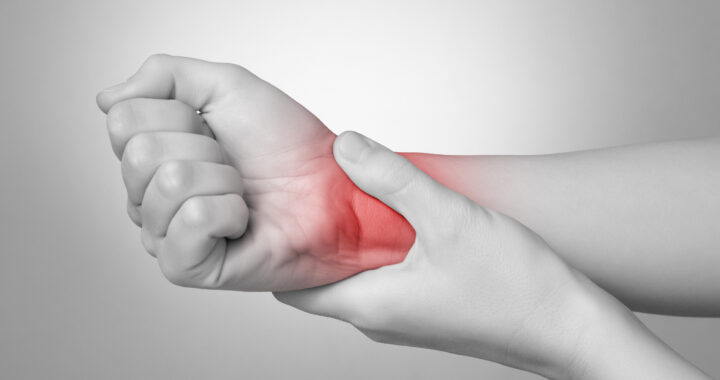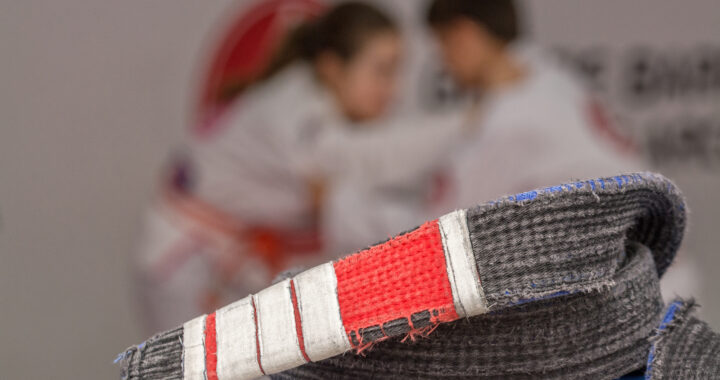Toe Hold

To Hold or Not to Hold
By Chris Fletcher
When you are put in a toe hold it feels like someone is trying to snap the outside of your foot in half, and it can actually damage several structures both in the foot and occasionally to outside of the knee.
The ankle and foot have 22 bones, 33 joints and 112 ligaments. The bones that are of interest during a toe hold are the fibula, talus, calcaneus, cuboid, third cuneiform and fifth metatarsal.

The ligaments are the anterior talofibular ligament (ATFL), the calcaneocuboid ligament, the cuneocuboid ligament and the fifth tarsometatarsal ligament.
The two most common injuries from a toe hold are a lateral ankle sprain and cuboid syndrome.
Lateral ankle sprains are fairly common in most sports, accounting for 14% of all orthopedic injuries that result in an emergency room visit. Lateral ankle sprains from a toe hold often involve the ATFL, which is the weakest ligament on the outside of the ankle and, in 70% of ankle sprains, it is the only ligament that is injured. (1)
Signs and symptoms of a lateral ankle sprain:
• Swelling on outside of ankle
• Loss of ankle range of motion
• Bruising over the outside of the ankle
• Pain
• Potential pop heard at injury on the outside of the ankle
• Difficulty walking
Early conservative management of a lateral ankle sprain includes rest for 72 hours and use of PRICE (protection, rest, ice, compression and elevation). A lace-up ankle support can help with both stability and light compression. Early pain-free range of motion, then gentle strengthening and then balance exercises are beneficial for a full recovery.
Mild and moderate ankle sprains typically recover in 7-15 days. (1). If conservative treatment fails and the athlete has continued pain and instability, surgery may be necessary. Research has indicated that no one surgical technique is superior to others and will be dependent on the surgeon’s training. Two common repairs are the Chrisman-Snook procedure and the modified Brostrom procedure. Return to sport after surgery is typically 3-6 months. (1)
Signs and symptoms of Cuboid Syndrome are:
• Pain along the outside of the foot
• Pain with ankle range of motion and resisted testing
• Pain with walking or hopping
Cuboid syndrome is a minor subluxation of the calcaneocuboid joint in the midfoot that pinches the labrum which can cause irritation and pain to the surrounding joints, ligaments and tendons.
Roughly four percent of all foot injuries are cuboid syndrome and six percent of all lateral ankle sprains will also have cuboid syndrome. (2)
Cuboid syndrome responds well to conservative treatment and does not require surgical intervention. A physical therapist or chiropractor can mobilize the cuboid within one or two sessions, and the pain and difficulty walking will be resolved. (3)
The next time someone gets a toe hold and you are late to tap, go see your physical therapist; they can get you back to the mats sooner with these two injuries.
Disclaimer: The content in this article is for informational purposes only – it is not intended to delay or substitute for professional medical advice, diagnosis, and/or treatment. The content is not intended to promote understanding of various musculoskeletal injuries. Content may not apply to your specific condition or symptoms. Always seek the advice of your physician or other qualified medical professional for any question you have for a medical condition.
References:
1. McGovern RP, Martin RRL. Managing ankle ligament sprains and tears: current opinion. Open Access J Sports Med. 2016; 7: 33–42. Published online 2016 Mar 2.
2. Patterson SM. Cuboid Syndrome: a Review of the Literature. J Sports Sci Med. 2006 Dec; 5(4): 597–606.
3. Durall CJ. Examination and Treatment of Cuboid Syndrome; A Literature Review. Sports Health. 2011 Nov; 3(6): 514–519.

Our printed magazine is full of extraordinary women with extraordinary stories, get your printed copy via mail today >



 Return to Play
Return to Play  Hypermobility Spectrum Disorder
Hypermobility Spectrum Disorder  Finger Pulley Injuries and the Value of Taping
Finger Pulley Injuries and the Value of Taping  Hip Pain and the Sneaky Tensor Fasciae Latae
Hip Pain and the Sneaky Tensor Fasciae Latae  Low Back Pain
Low Back Pain  Wrist Locks:
Wrist Locks:  Father Time is Undefeated
Father Time is Undefeated  The Jiujiteira Sisterhood
The Jiujiteira Sisterhood  Advice in the Ranks- From White to Black
Advice in the Ranks- From White to Black  ADGS Rome: Jiujiteiras Shine in the Land of the Colosseum
ADGS Rome: Jiujiteiras Shine in the Land of the Colosseum